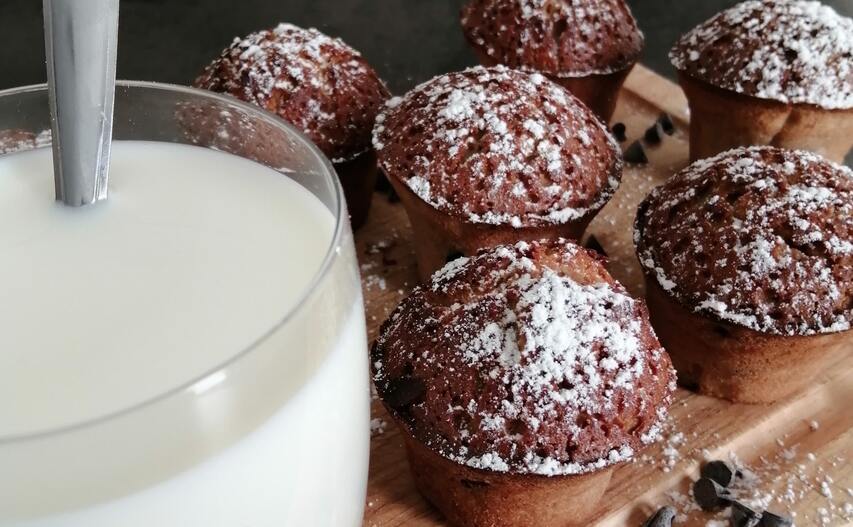Milk and sugary food can cause adult acne - study proves

Adult acne is a common issue for many, with factors such as hormones and genetics playing a major role. Recent research, however, has highlighted the influence of diet on adult acne. A landmark study in the Journal of the American Medical Association analyzed dietary impacts on acne in 25,000 adults, revealing a notable link between acne and the consumption of fatty and sugary foods, sugary beverages, and milk. This article delves into how sugar and dairy can trigger acne, supported by clinical evidence and expert insights.
Why Sugary Foods Contribute to Adult Acne
1. High Glycemic Load and Hormonal Impact:
Eating foods high on the glycemic index (such as sugary snacks and drinks) spikes insulin and IGF-1 (Insulin-like Growth Factor-1) levels, which activate mTORC1, a protein complex linked to increased cell proliferation and reduced cell turnover. This imbalance leads to higher oxidative stress and inflammation—factors that can drive acne.
2. Androgen Activation:
High glycemic foods also boost androgen production, which stimulates sebum (oil) production. Excess sebum clogs pores, increasing the likelihood of acne.
Clinical Evidence:
A study by Ismail and colleagues compared the diets of 44 acne sufferers with 44 individuals without acne, finding that those with acne had a diet significantly higher in glycemic load. Multiple studies further confirm that high carbohydrate consumption correlates with a higher incidence of acne.
Why Milk Can Worsen Adult Acne
1. Effects of IGF-1 and Insulin:
Milk increases IGF-1 and insulin levels in the body, and these hormones remain partially active even after milk is processed and digested. This hormonal shift, similar to the effects of high glycemic foods, promotes acne by stimulating oil production and inflammation.
2. Insights from IGF-1 Studies:
Research on individuals with Laron syndrome—who don’t naturally produce IGF-1 and don’t develop acne—suggests that IGF-1 plays a critical role in acne formation.
Clinical Evidence:
In studies led by Adebamowo, milk consumption, especially skim milk, was significantly associated with acne in women, even after controlling for factors like age, BMI, and calorie intake. Similar findings were observed in adolescent boys and adults.
Conclusion
The latest large-scale study underscores the connection between adult acne and specific dietary choices. Consuming sugary foods and milk increases insulin, IGF-1, and androgens, which can lead to breakouts. These findings offer valuable insights for adults looking to manage or prevent acne through dietary adjustments. Although more research is needed, this study marks an important step in understanding how diet impacts acne.
FAQs
Q1: Can sugary foods directly cause acne?
Sugary foods indirectly contribute to acne by triggering hormonal imbalances, oxidative stress, and inflammation, all linked to acne.
Q2: Does milk consumption worsen existing acne?
Yes, clinical evidence shows that milk, especially skim milk, is linked to acne in both men and women.
Q3: What other factors contribute to adult acne besides diet?
Aside from diet, hormonal fluctuations, genetics, stress, and skincare routines are significant factors in adult acne.
Q4: Are there dietary changes that can help prevent adult acne?
Following a low glycemic-load diet and reducing milk consumption may help. Consulting a dermatologist can provide more personalized guidance.
Q5: What treatment options exist for adult acne?
In addition to dietary adjustments, dermatologists can recommend topical treatments, oral medications, and personalized skincare routines for effective acne management.
References:
1. Aizawa H, Niimura M. Elevated serum insulin-like growth factor-1 (IGF-1) levels in women with post-adolescent acne. J Dermatol. 1995;22(4):249-252.
2. Ismail NH, Manaf ZA, Azizan NZ. High glycemic load diet, milk, and ice cream consumption are related to acne vulgaris in Malaysian young adults: a case-control study. BMC Dermatol. 2012;12:13.
3. Adebamowo CA, Spiegelman D, Danby FW, Frazier AL, Willett WC, Holmes MD. High school dietary dairy intake and teenage acne. J Am Acad Dermatol. 2005;52(2):207-214.
4. Adebamowo CA, Spiegelman D, Berkey CS, et al. Milk consumption and acne in adolescent girls. Dermatol Online J. 2006;12(4):1.
5. Adebamowo CA, Spiegelman D, Berkey CS, et al. Milk consumption and acne in teenaged boys. J Am Acad Dermatol. 2008;58(5):787-793.
6. Juhl CR, Bergholdt HKM, Miller IM, Jemec GBE, Kanters JK, Ellervik C. Dairy intake and acne vulgaris: a systematic review and meta-analysis of 78,529 children, adolescents, and young adults. Nutrients. 2018;10(8):E1049.
7. Juhl CR, Bergholdt HKM, Miller IM, Jemec GBE, Kanters JK, Ellervik C. Lactase persistence, milk intake, and adult acne: a mendelian randomization study of 20,416 Danish adults. Nutrients. 2018;10(8):1041.
To find the right acne treatments for your unique skin, take the free skin assessment by clicking here.



